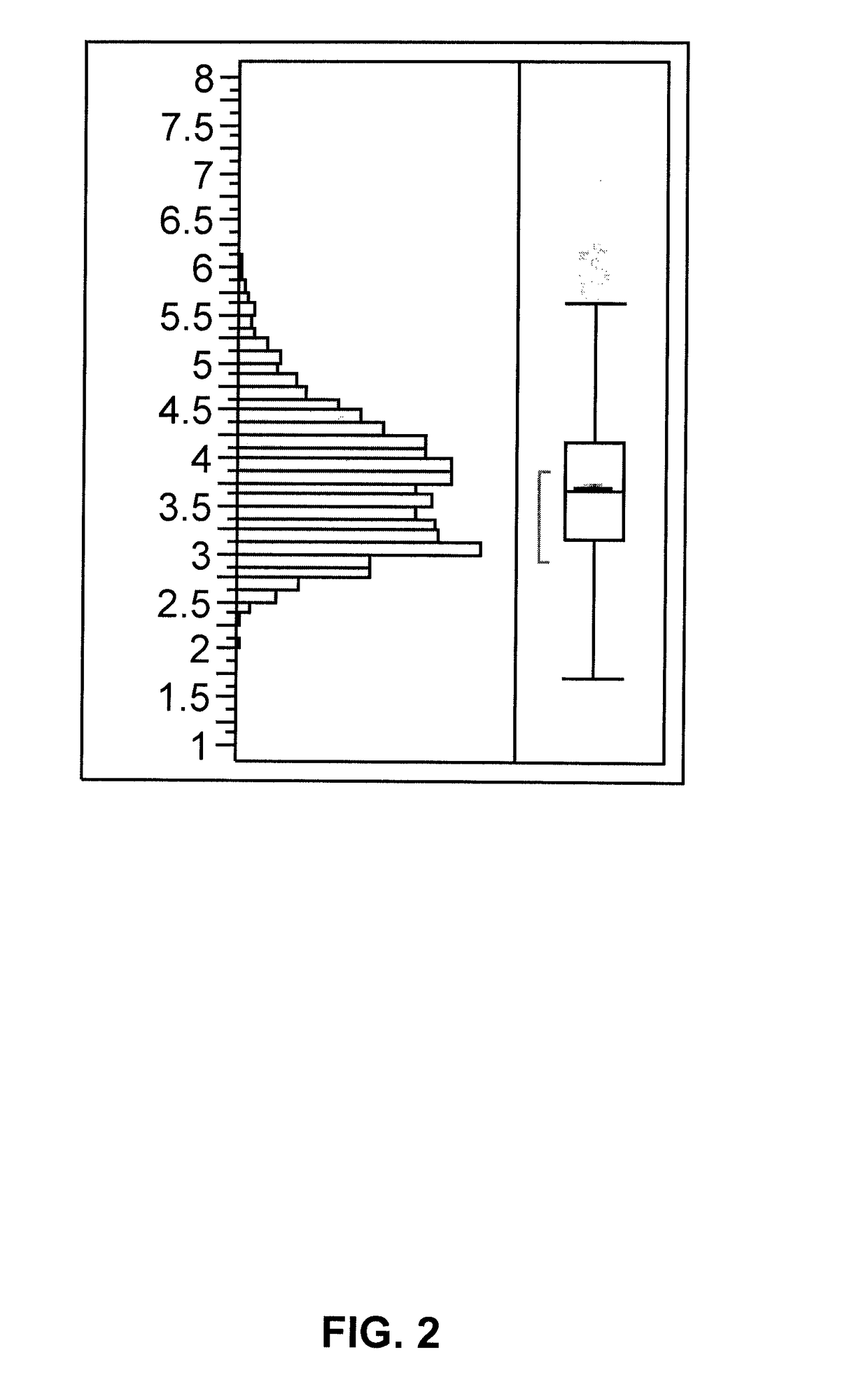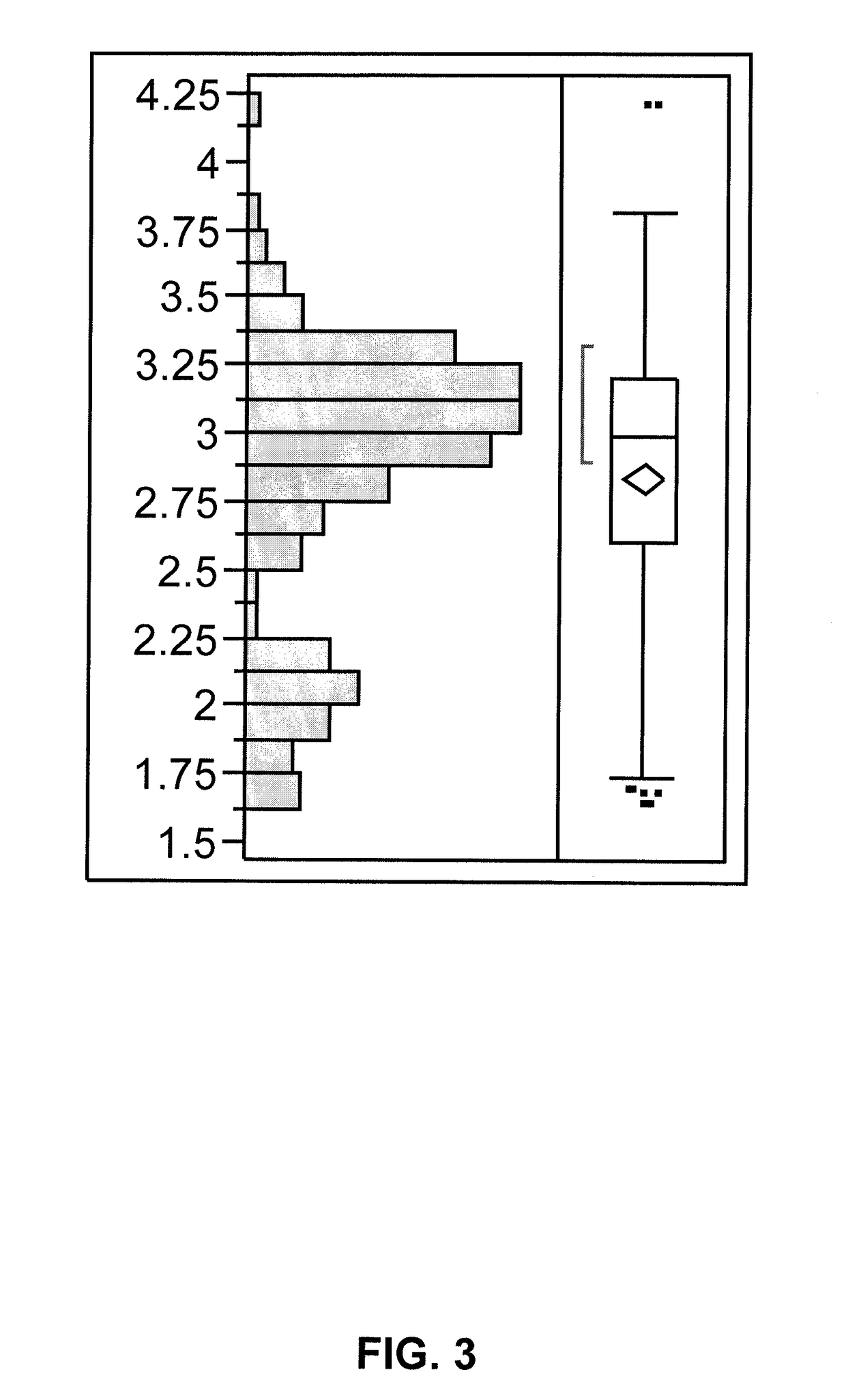Molecular markers for low palmitic acid content in sunflower (Helianthus annus), and methods of using the same
a palmitic acid and sunflower technology, applied in the field of sunflower plants, can solve the problems of time-consuming process for new cultivar development, complex inheritance influence on selection, and greasy taste in the mouth, and achieve the effect of facilitating marker-assisted selection and superior utility in marker-assisted selection
- Summary
- Abstract
- Description
- Claims
- Application Information
AI Technical Summary
Benefits of technology
Problems solved by technology
Method used
Image
Examples
example 1
ariation for Palmitic Acid Content in Sunflower
[0232]Natural variation of palmitic acid content in sunflower was measured based upon the AOCS™ method Ce 2-66(97) (AOCS™ product code MC-CE266).
[0233]Five sunflower seeds from each sample to be tested were placed into a labeled 96-well extraction plate (Corning Inc. catalog no. 4411) containing one ⅛-inch steel ball (Small Parts Inc. catalog no. BS-0125-C). 200 μL heptanes was added to each well, which were then capped. The capped samples were placed in a GenoGrinder™ for 2.0 minutes at 1300 strokes / minute. Samples were removed, and any unground samples were crushed by hand with a spatula and re-ground.
[0234]After the first grind, 400 μL heptanes was added to each well, and the material was re-ground at 1300 strokes / minute. The samples were then centrifuged for 10 minutes at 3700 rpm at 6° C. Then, using a Beckman Coulter MC robot, the supernatant was transferred to a 96-well plate with glass inserts (MicroLiter Analytical Supplies Inc...
example 2
ation of Germplasm with Low Palmitic Acid Content
[0240]A low palmitic acid profile was discovered during a program designed to improve an elite black-hulled, high linoleic acid sunflower line (687R) by breeding it with a line having an elevated oleic acid profile. This was accomplished by means of backcross breeding using as the high oleic acid donor a striped-hull, high oleic acid confection parent (H280R). H280R has, in general, a lower palmitic acid content, but the observed level is not normally below about 2.5%. To achieve the targeted oleic acid levels, FAME analysis as described in Example 1 was conducted at each generation during this back-cross breeding program. During the routine screening of fatty acid levels, a segregant was observed that had substantially reduced levels of palmitic acid. In Table 3, the palmitic acid content values for four individuals from the first back-cross generation of the back-cross breeding program of 687R with H280R is shown.
[0241]
TABLE 3Palmit...
example 3
for Palmitic Acid Content in a Sunflower Population Made Between a Low Palmitic Acid Parent and a Conventional Sunflower Elite Parent
[0242]Variation in the palmitic acid content when an elite sunflower inbred is crossed to a source of the reduced palmitic acid content was demonstrated by crossing a high oleic acid restorer (line-R) with a low palmitic acid source derived from the discovery described in Example 2. The low palmitic acid source had been converted to a cytoplasmic male sterile background (line-A). An F2 population from the cross of line-A by line-R was generated, and 384 seeds were collected. The seeds were cut in half, with half of the seed being analyzed according to the protocol described in Example 1. The other half of the seed was planted for subsequent analysis. The summary statistics for the palmitic acid content in the F2 population line-A / line-R (N=384) are presented in Tables 4-5.
[0243]
TABLE 4Statistics of palmitic acid content distribution in anF2 population ...
PUM
| Property | Measurement | Unit |
|---|---|---|
| time | aaaaa | aaaaa |
| temperature | aaaaa | aaaaa |
| thickness | aaaaa | aaaaa |
Abstract
Description
Claims
Application Information
 Login to View More
Login to View More - R&D
- Intellectual Property
- Life Sciences
- Materials
- Tech Scout
- Unparalleled Data Quality
- Higher Quality Content
- 60% Fewer Hallucinations
Browse by: Latest US Patents, China's latest patents, Technical Efficacy Thesaurus, Application Domain, Technology Topic, Popular Technical Reports.
© 2025 PatSnap. All rights reserved.Legal|Privacy policy|Modern Slavery Act Transparency Statement|Sitemap|About US| Contact US: help@patsnap.com



